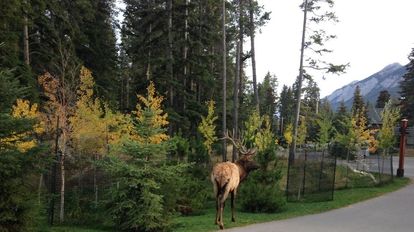Elk are a reservoir for brucellosis-causing bacteria of cattle in Yellowstone- NPS, USDA, and USGS2/5/2017 Brucella abortus is the bacterium that causes brucellosis in cattle leading to reduced fertility and failed pregnancies. The bacteria spread can spread herds, and because there is no cure, the animals are culled to prevent further spread, becoming a significant cost to cattle ranchers. Vaccination of newborn calves and testing imported cattle, has largely eliminated bovine brucellosis in the U.S. Other efforts have limited contact between cattle and wild bison, which can also be infected with B. abortus, in order to prevent new outbreaks. However, research conducted by several U.S. agencies has identified Elk as another reservoir for B. abortus. The researchers tested elk, bison, and cattle samples for B. abortus bacteria collected between 1965 and 2013 in the Greater Yellowstone Ecosystem (an area covering the intersection of Montana, Idaho, and Wyoming). They found five closely related lineages, or families of B abortus bacteria, suggesting at least five different times the bacteria were imported into the area before spreading. Because the researchers had samples from different times, and different locations throughout the area, the researchers could make models of where infected animals were spreading across the region as well as whether infections were traveling within an animal species (for example, from elk to elk) or between animal species (elk to cattle). The researchers find that elk are a newly discovered reservoir for Brucella abortus, passing the bacteria between each other and to cattle and bison. The range of B. abortus infected animals and number of infections is also slowly rising. While efforts to reduce bison to cattle infections may have been successful, the ability for elk to roam unrestricted in the wild and to continually pass the bacteria to other elk and subsequently cattle suggest limiting only bison-cattle contact is not sufficient to prevent new brucellosis outbreaks and that elk must be considered in future measures. Original research paper can be found here: https://www.ncbi.nlm.nih.gov/pubmed/27165544 Facts about brucellosis can be found here: https://www.aphis.usda.gov/animal_health/animal_diseases/brucellosis/downloads/bruc-facts.pdf Can't access the original article? Find out more details about this article on our database: http://www.opensciencedb.com/federal-agency-research-db.html#search-federal-research-db/medical-research-db-search-result2/58c84537d6fffd28393596e5/ |
AuthorsWe are grad students and scientists dedicated to disseminating Are you a student or postdoc? We need your help to deliver scientific facts to the public!CategoriesArchives |
|
|



